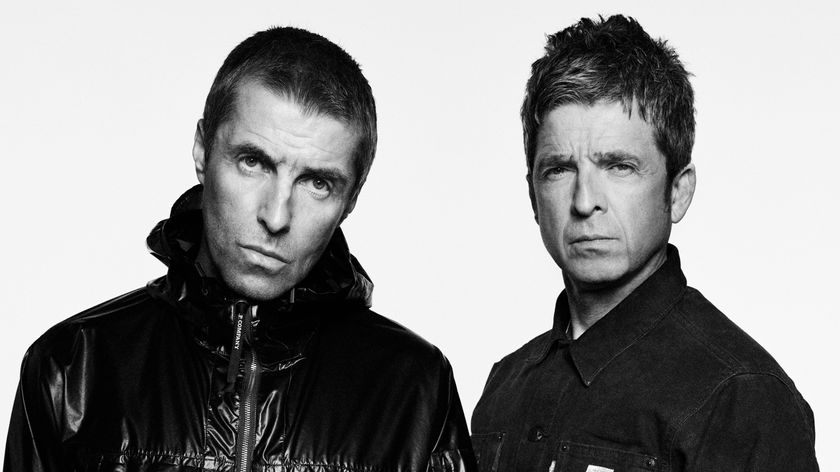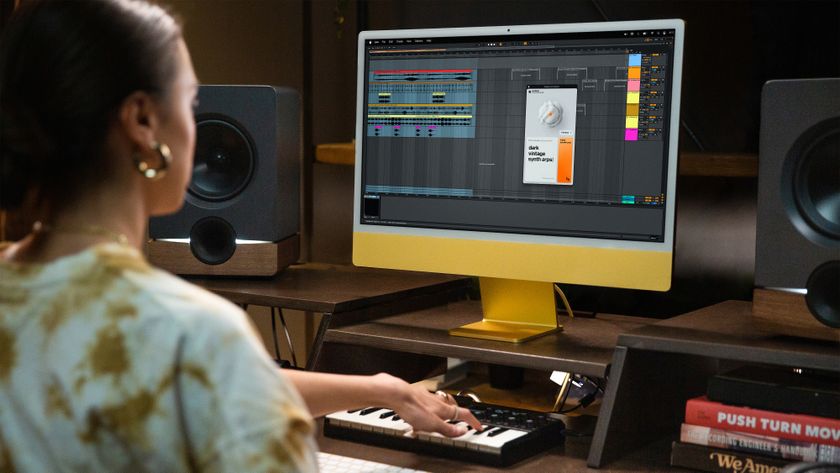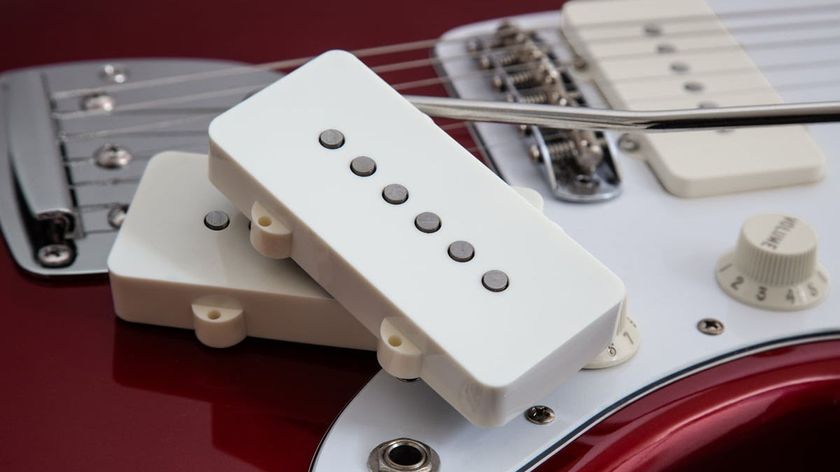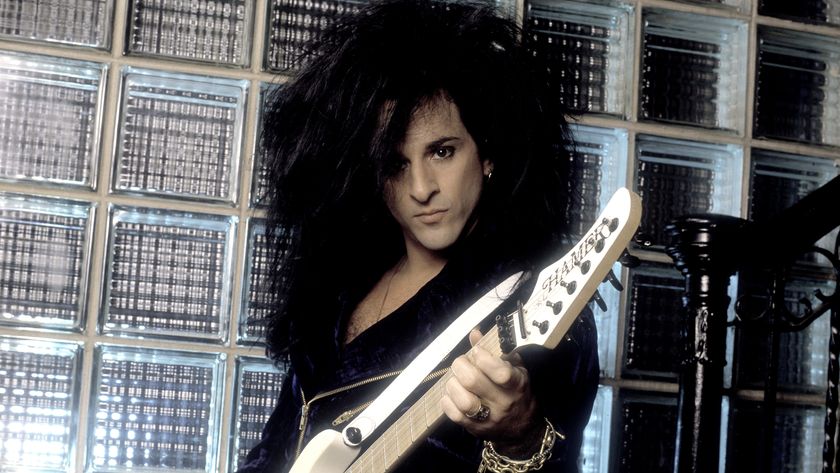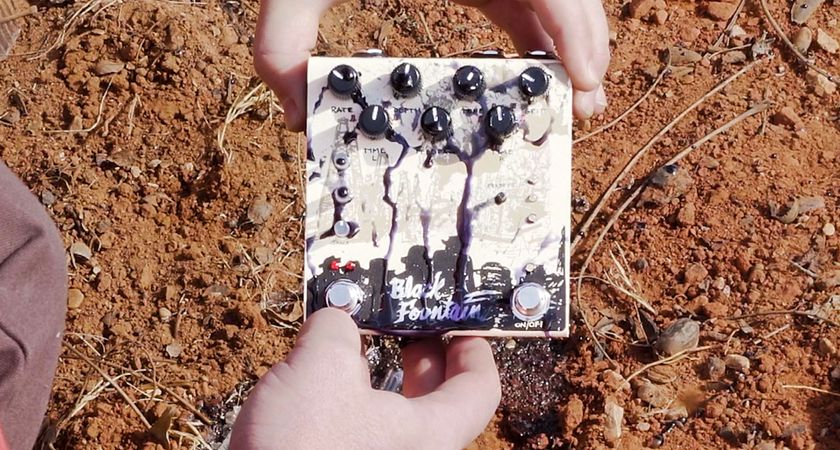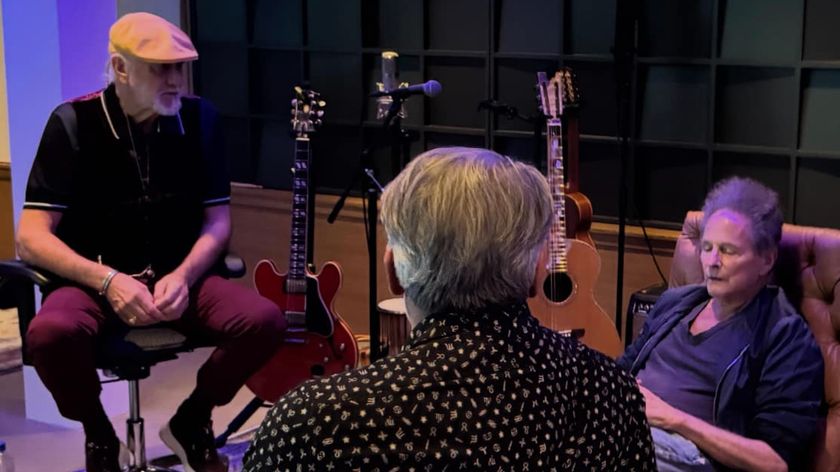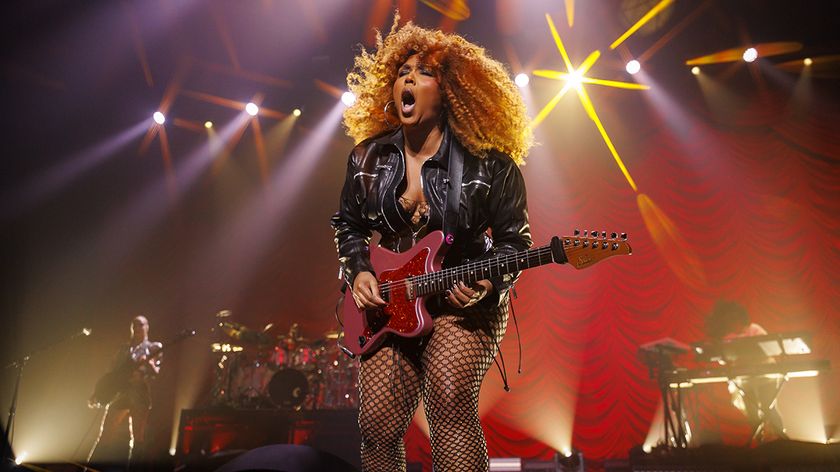Rush drum legend Neil Peart on the pursuit of excellence: "There is nothing I would rather have than the respect of other musicians for what I do"
Classic interview: "Can I go down to the basement every day and practise again like I did when I was 13?"
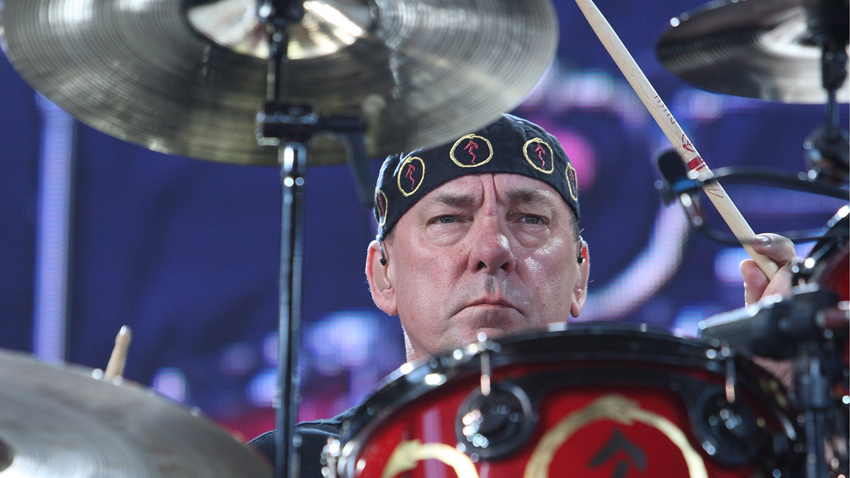
Today, 12 September, would have been Neil Peart's birthday, Here, we republish a classic interview in which he looked back on a lifetime of study.
"It's been my life's tangent," says Neil Peart on the subject of the pursuit of excellence. Since he joined Rush back in 1975, Neil has been the poster boy for prog - a disciplined, metronomic and powerful player. More than 35 years since he joined the world's foremost power trio, Rush are still breaking new ground.
It's a lifelong pursuit to develop good time
Neil's first role model for drumming excellence was Gene Krupa, who he encountered in the movie The Gene Krupa Story (starring Sal Mineo). "Even watching it now, it was so well done," says Neil.
"Sal Mineo was coached by Gene. The opening sequence is a beautiful overhead shot of Gene actually playing, and then all the drumming is Gene. Sal Mineo mimics it so well that it really works and that was the inspiration. 'Wow! Being a drummer is romantic and dangerous and glamorous.' That got me curious."
Neil's mastery of his trade has made him the toast of his peers in the rock community. His career is littered with classic performances and brilliantly crafted drum parts that are vital to Rush's musical identity.
Yet despite his success, Neil remains a student of his art, reinventing his playing virtually from scratch in the 90s with drum guru Freddie Gruber and recently undertaking another course of study with Peter Erskine.
The continuing evolution of Neil's abilities speaks to the truth of the maxim that success is not an act, but a habit. The pursuit of excellence is a journey, not a destination.
Get the MusicRadar Newsletter
Want all the hottest music and gear news, reviews, deals, features and more, direct to your inbox? Sign up here.
Impeccable timekeeping is a lifelong pursuit
"While I was playing along with records, all the frustrations were tempo things - getting excited when you play a fill and then getting tired after. It's a lifelong pursuit to develop good time.
"I'm talking about spanning four decades for me, first of all just trying to play the tempos like the records, then being in the studios and having to deal with click tracks and sequencers from the late-70s and playing in mathematical time. That was my pursuit, to be able to do that both in the studio and live.
'Can I go down to the basement every day and practise again like I did when I was 13?'
"I learned a lot about the click track, how you can make it breathe. It doesn't have to be a mechanically-driven clock at all, it's a guide. You can push and pull an amazing amount on those tiny increments of click pulses.
"But that led me into a trap by the mid-90s with sequences and click tracks that I felt were metronomic in the bad sense, I was starting to feel stiff and that's when I studied with Freddie Gruber because I saw Steve Smith play.
"In the mid-80s we worked together on a Jeff Berlin record so I'd seen Steve play and knew that he was great, but when we were doing the Buddy Rich tribute he came in to set up and just started playing. I said, 'What happened to you?' It was so beautiful, so musical, so crisp and elegant. And he said, 'Freddie.'"
Learn how to dance on the drums
"I met Freddie around that same time of the recording of the Buddy Rich tribute. We became lifelong friends and started working together to loosen up my playing. That's what his coaching was all about - it was all physical, not musical.
"He's not the kind of teacher who teaches you how to play the drums, he teaches you how to dance on the drums.
"At that time, around '95 or so, I'd been playing for 30 years. 'Am I really going to stop now, practise everyday with these exercises he's giving me, go back to traditional grip, the right end of the sticks?' because I'd been playing butt-end with matched grip for a long time by then.
"He had me moving the snare drum up, the bass drum farther away - so counter-intuitive. I always thought, 'Get everything as close as you can and then you have the best reach on it'. But in fact, no, it's your area of motion. It's better to have your bass drum, toms, ride cymbal a little farther away, so it was re-inventing the way I play the instrument.
"'I'm a good butcher but I'd just like to get a little more surgery into it'"
"I had to say, 'Can I go down to the basement every day and practise again like I did when I was 13? If I can commit myself to that, will I be rewarded?' I decided it was worth a try and did that for about a year and a half. The band happened not to be working because Geddy and his wife were having a baby so it was perfect timing.
"Freddie helped me in that way of loosening it all up within the framework and carrying forward with the accuracy and it was still my playing. A lot of people couldn't tell the difference at first until they played with me and then they noticed the clock was different just from that new physical approach to playing the kit.
"It was such a subtle approach that our co-producer at the time, Peter Collins, said, 'Well, it still sounds like you.' I was kind of disappointed but then when the other guys played with me, they noticed the clock was different."
Check out Neil Peart playing One O' Clock Jump at the Buddy Rich Memorial Concert in 1991:
Learn how to 'own' time
"In 2007 I studied with Peter Erskine because I was doing a Buddy Rich tribute concert and I wanted to take my big band drumming up a level. I went over to Peter's house with my sticks, feeling like a 13-year-old again.
"I was going in there to the master and I told him at the time, 'As far as I'm concerned you're a surgeon and I'm a butcher.' He said, 'You're not a butcher!' I said, 'No, I'm a good butcher but I'd just like to get a little more surgery into it.' He helped me with that eloquence and time sense.
"Peter had me start by playing quarter note ride beats. I had this thing from Freddie where I was doing a little flick of the wrist in between. Peter points, 'What's that?' I knew he studied with Freddie so I was kind of confused but I said, 'That's time keeping.'
"He said, 'No,' he points to his heart, 'time keeping is here. Own the time.' It was an evolution I was able to bridge. Now I feel that flick of the wrist between each beat. I practised for six months just on the hi-hat alone with Peter."
Understand how to control time
"Getting back to the central pulse thing, I know it's from my bass drum. That is the fundamental Geddy hangs his bass parts off, and thus the band hangs from in a very real sense.
"The bass drum is the heart of it and I know that I feel, play and position those bass drum notes a little differently now. It's so subtle it couldn't be measured, using anticipation, using tension, pushing a little bit on purpose.
"...respect is something you have to earn continually. A lot of times people only respect dead musicians because they can't let you down"
"One of the older songs we're playing, Presto, is from '79 and I don't know if we've played it ever, or we haven't played it for 30 years. I was saying to my bandmates how much better that song is now than it was on the record and Geddy said, 'Yeah, we have a much better rhythmic pulse now than we did back then.'
"The interesting thing is that it's the only time in my life I've been asked to speed up. Stewart Copeland and I talked about that because we're both pretty energetic and when you get excited you speed up, so I've always been 'Pull back!' It's what I've had to learn to do to control time, and no one has ever asked me to speed up.
"When Geddy and I were discussing that song and the bridge section he said, 'The tempo is right now but I think it would feel better to push it forward a little bit,' and I did. To be able to control that is so gratifying as a drummer."
Challenge the status quo
"The real test of a musician is live performance. It's one thing to spend a long time learning how to play well in the studio but to do it in front of people is what keeps me coming back to touring. For me to call myself a musician, it's necessary to play live and it rewards so much, not just in the pay cheque sense but what it does for my playing.
"I feel it through a tour, I feel it at the end of a tour, all that I've gathered and especially now that I am improvising so much. I try not to repeat myself in fills in all the Rush songs unless it is something simple or something I feel is my own characteristic thing.
"On the record Snakes And Arrows our co-producer Nick Raskulinecz wanted me to play my Latin style ride beat that I used on all the old songs. I said, 'No, I don't do that any more,' but he convinced me it was best for the song.
"For a while that was my thing and I used it a lot because it was so propulsive and it also gives a nice fluid flow. People talk to me about playing on two ride surfaces, alternating between ride cymbal and china cymbal or the X-hat I have.
"If I want a quarter note feel on the hi-hat I play the eighth off of it on the ride so it gives it a nice lilt. Those are just little devices to get more fluidity into my playing."
Far Cry, taken from the Rush album Snakes & Arrows:
Respect can be earned and lost
"There is nothing I would rather have than the respect of other musicians for what I do, but respect is something you have to earn continually. A lot of times people only respect dead musicians because they can't let you down. Everyone has had that experience of being a fan of someone who suddenly really lets you down.
"As a musician it's my responsibility to get better and if people are admiring the work I do then that's even more inspiration to improve and to take it up a notch. The hunger for improvement and exploration and all that really does derive from the acclaim. I know people give me that respect so I feel I have to earn it."
Finding your sound is an evolution
"With Sabian it was the development of the whole line of cymbals that started from a piece of metal on a stand. Mark Love [Sabian Master Product Specialist] and I tried everything possible to find out what I liked the best so that was how in-depth the process was of metallurgy and music.
"I was having a discussion with John Good at Drum Workshop one day and saying that when we used to open shows in those days, a lot of drummers were using 24" bass drums.
"I used to love the way they sounded out front through the PA but I never liked the way they played, so I always went with a 22". John said, 'What about a 23"?' I said, 'There's no such thing.' And he had to make the shell, get the Remo drum head company to make 23" heads and all of that came out of that discussion.
"That's how eager he was to try it and of course the 23" bass drum not only works so great for me but a lot of other drummers are finding that too. I love the collaborative aspect of that."
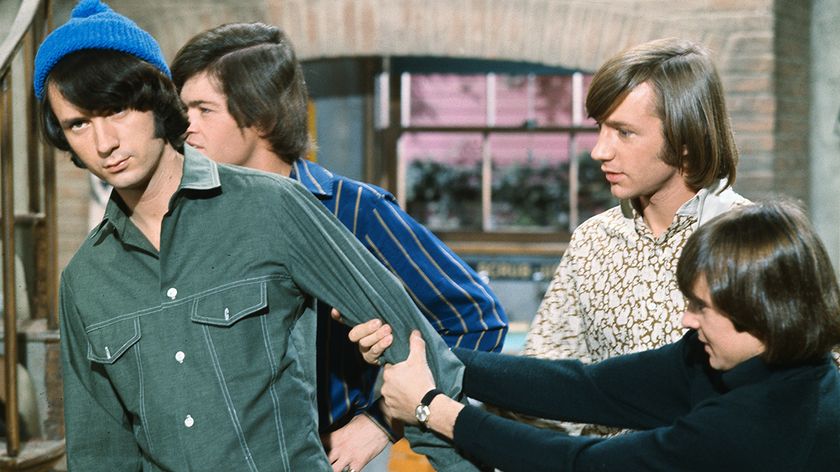
“He was not an actor, he was a singer-songwriter, and they told him he was going to write and record his own music. And basically, he was not allowed to do that": Micky Dolenz explains Mike Nesmith's "frustration" at being in The Monkees
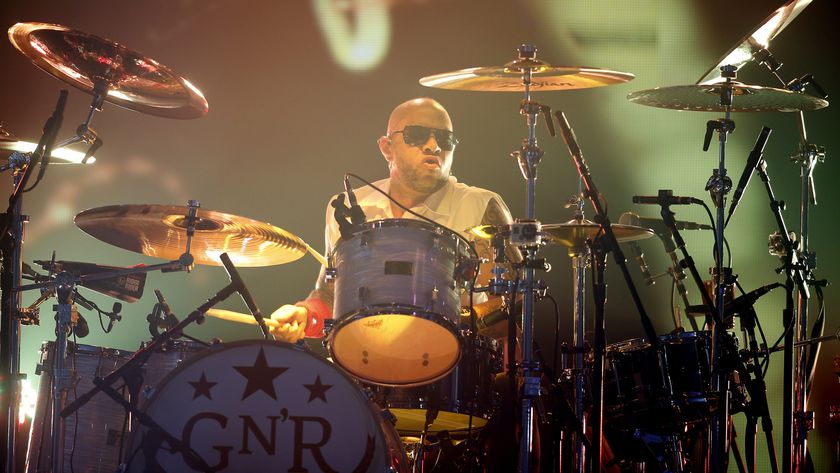
“There’s nights where I think, ‘If we don’t get to Paradise City soon I’m going to pass out!’”: How drummer Frank Ferrer powered Guns N’ Roses for 19 years
![Justin Hawkins [left] of the Darkness plays an open G on his offset electric and closes his eyes as he performs onstage; soul-reggae icon Johnny Nash [right] frets a chord on his acoustic and wears a patched denim jacket.](https://cdn.mos.cms.futurecdn.net/hWzCjD9ZWQiPPjMtTWiFfa-840-80.jpg)
